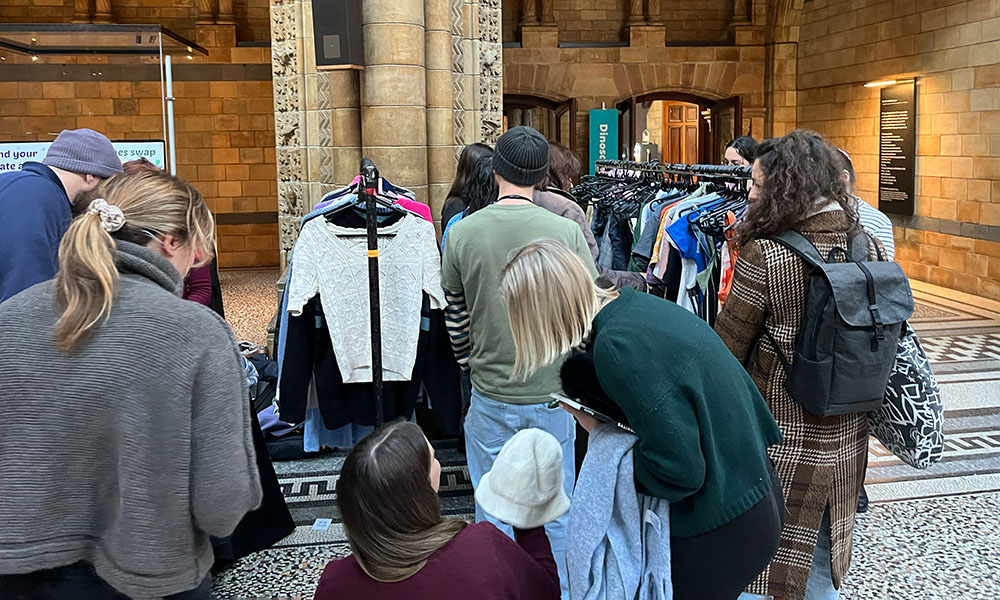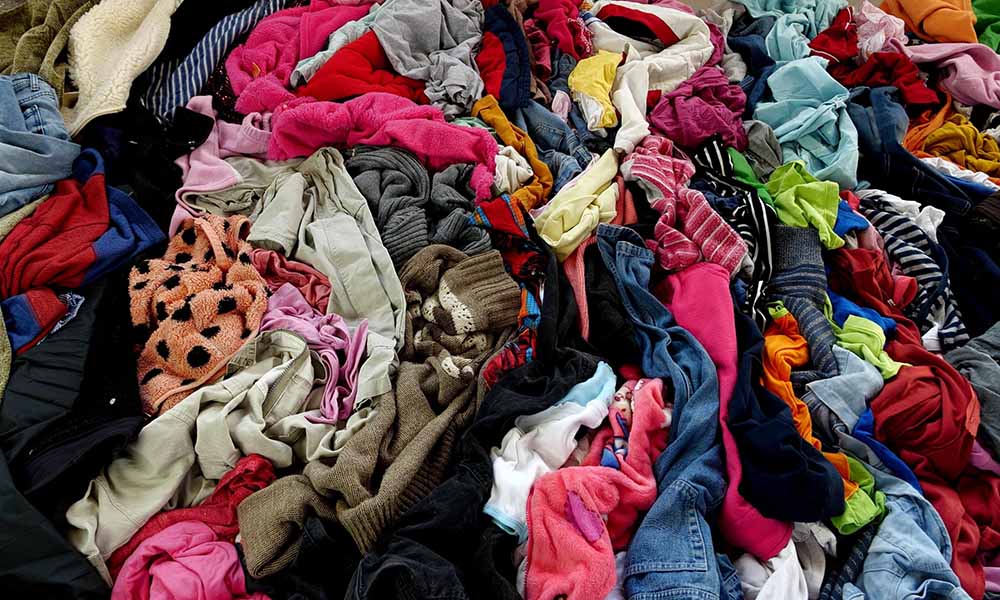
Tips and inspiration
- Give your pre-loved clothes a new life and refresh your wardrobe for free by hosting a clothes swap with friends or colleagues.
- If you’re holding one at work, book a meeting room during lunch or ask to use the common room or foyer.
- Get the word out. Message your group chat or post on your work intranet. Ask others to invite their friends or teammates to ensure a good mix of sizes and styles at the swap.
- Ask everyone to bring clean items that are in good condition and make browsing easier by sorting clothes into categories such as tops, bottoms, outerwear and accessories.
- Donate leftover clothes to a local charity shop or save them for a future swap.
- Loved your first swap? Make it a regular thing! You can even expand the idea to craft supplies, books or anything your group loves.
- We hosted our very own clothes swap at the Natural History Museum and our colleagues loved it.

The big picture
Around 300,000 tonnes of clothes are thrown out each year in the UK.
Extending the life of clothing by an extra nine months could reduce carbon, waste and water footprints by around 20–30% for each item of clothing.
Why is this action beneficial?
Save money
Clothes swaps are free. They’re a great way to refresh your wardrobe or to try out new styles without spending anything.
Strengthen community
By hosting a clothes swap, you provide a space for people to connect, make friends and bond over sustainable fashion. You also help build relationships between people in your community by freely sharing resources such as clothes.
Spread the word
By showing how fun and easy it is to run a clothes swap, you could inspire others to take action to help the planet by organising their own.
Reduce emissions
The process of making new clothes and the fashion industry’s long supply chains produce a lot of greenhouse gas emissions. By giving pre-loved clothes a new life, you’re reducing the demand for new garments and the related emissions.
Advocate for others
Fast fashion often exploits underpaid workers, mostly women in the Global South, working in poor conditions. By organising a clothes swap, you reduce the demand for these unethical supply chains.
Reduce waste
Giving clothes a second life means that less textile waste ends up in landfill.
Reduce pollution
The mass production of clothing involves large amounts of toxic chemicals, dyes and microplastics that often end up in waterways. By swapping instead of shopping, you help reduce the demand for new production, which in turn helps to reduce associated water pollution.
Similar actions
We’re still developing the Find Your Climate Action tool. Watch this space for updates and share your feedback with us to help improve it.
More ways to get involved
Fixing Our Broken Planet
The Find Your Climate Action tool is part of our Fixing Our Broken Planet programme, which is designed to inspire people to take action to help the planet. The programme also includes a new gallery as well as experiences and events.
Join our community
Sign up to our new monthly Planet Fixers newsletter for tips on living sustainably as well as interesting articles and upcoming events.
Funding
We thank all who have generously contributed to Fixing Our Broken Planet. Learn more about our sponsors and donors.